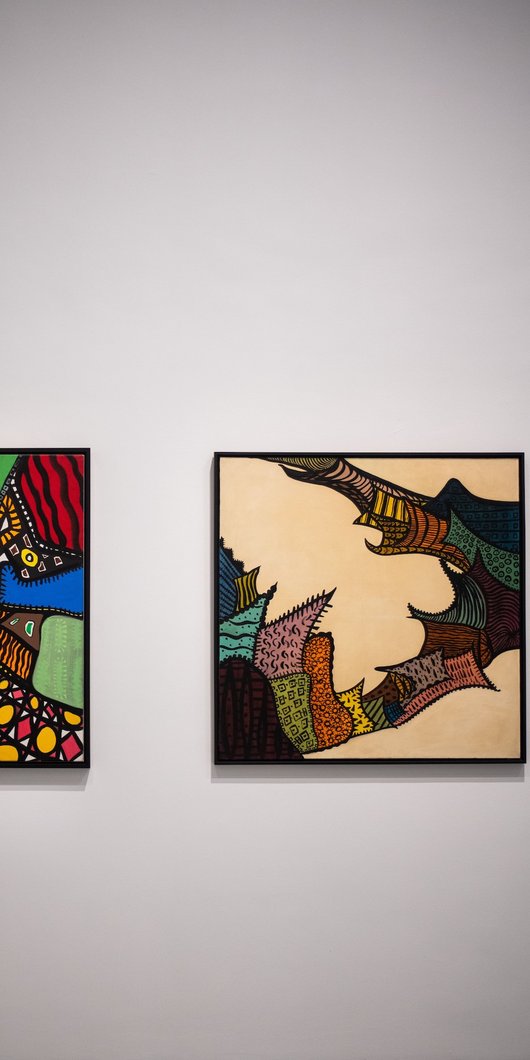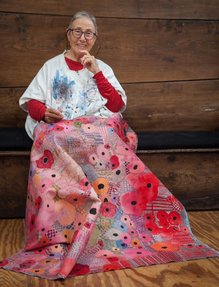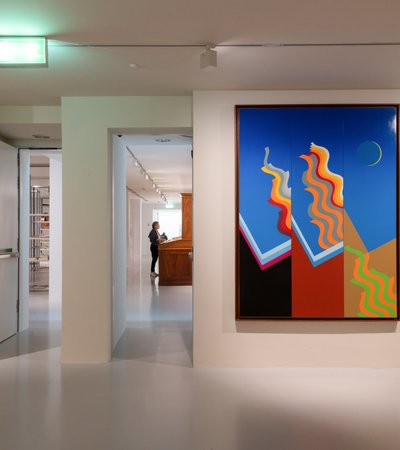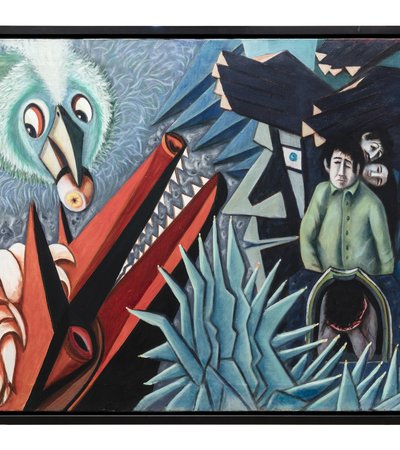From her line technique to independent fashion choices and her quest for personal autonomy, understanding the core of Huguette Caland’s (née El Khoury) practice starts with a reflection on her beginnings.
Born in 1931 Beirut, Caland embarked upon her journey of extensive art production in the Lebanese capital, later establishing her first studio in the town of Kaslik. Her early works from the 1960s highlight the foundations she would build on later in her six-decade career. This period is considered the defining chapter in understanding Caland’s artistic identity and her vibrant oeuvre.
Caland’s father, Bechara El Khoury, was the first elected Lebanese president following the end of the French mandate in 1943. She expressed a yearning for independence at an early age, despite the pressures of being in the public eye. Along with other creatives from the Arab world, Caland challenged conservative attitudes toward women’s standing in society, becoming a liberation figure in her own right.
In 1964, El Khoury, whom Huguette was very close to, passed away, leading her to create her earliest painting, Soleil Rouge (Red Sun), formerly titled Cancer. The same year, at thirty-four, while married with three children, she enrolled as a mature student at the American University of Beirut (AUB) for a formal education in the fine arts. It was at university that she mastered using the line delicately, like a thread, in her drawings and paintings.
While she was studying there, an American artist of Lebanese descent, Helen el-Khal, joined the university in 1967 as a faculty member to teach painting and became both a mentor and a friend to Caland. In parallel, Caland had started questioning the physicality of the female body, dismissing the weight of expectations based on her status.




